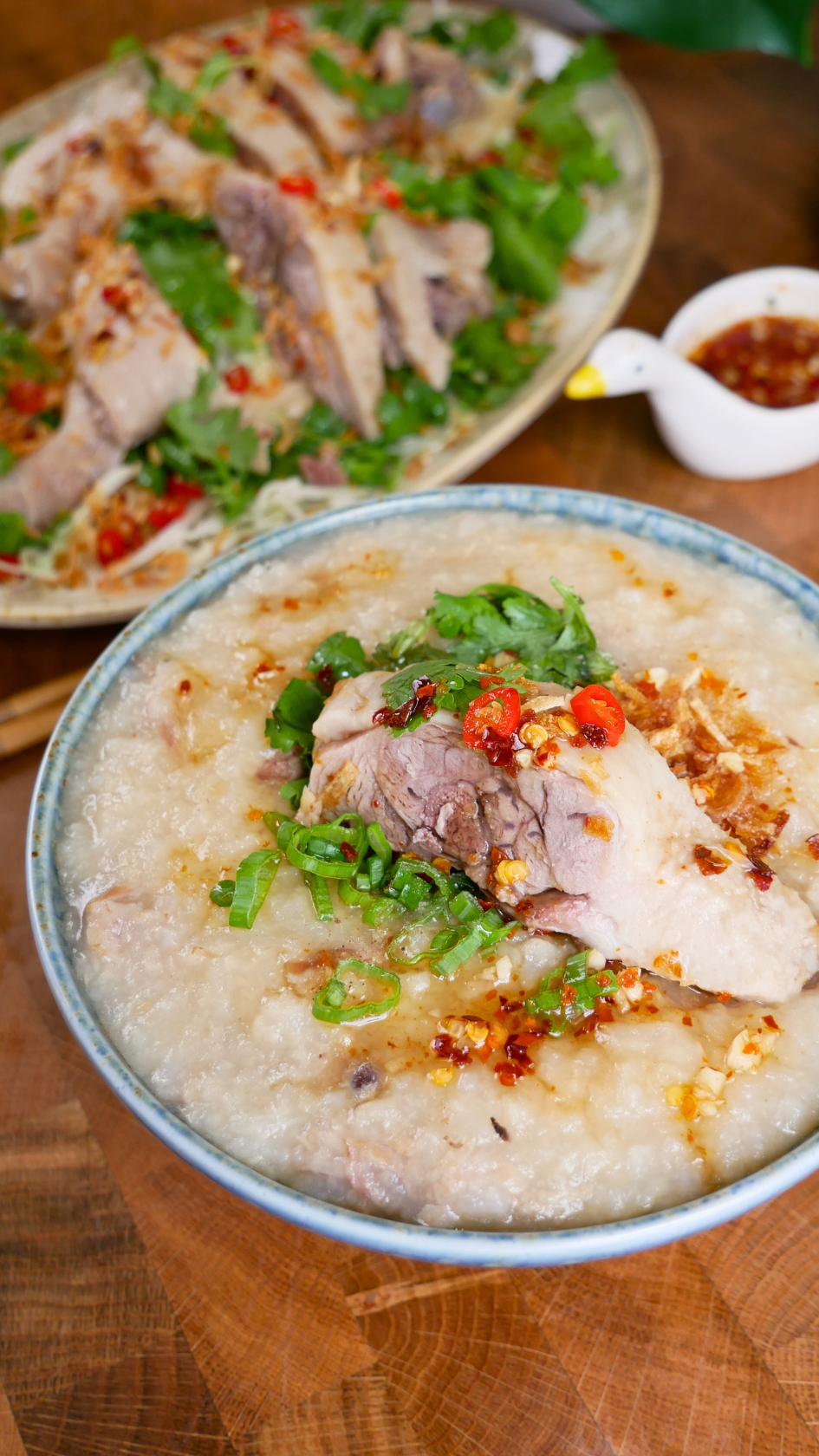Chao vit is a delicious Vietnamese duck congee recipe that’s light, refreshing, and hearty. In Vietnamese, chao means porridge while vit means duck so chao vit literally translates to duck porridge. It’s very comforting and simple to make, too! I typically enjoy congee like my Preserved Duck Egg Congee or Chicken Congee with minimal toppings but I love serving this dish with cilantro, scallions, fried shallots, and a drizzle of nuoc mam.
In Vietnam, this dish is usually served with a side of Vietnamese duck salad called goi vit, which I highly recommend. You can essentially prepare two dishes using one recipe!
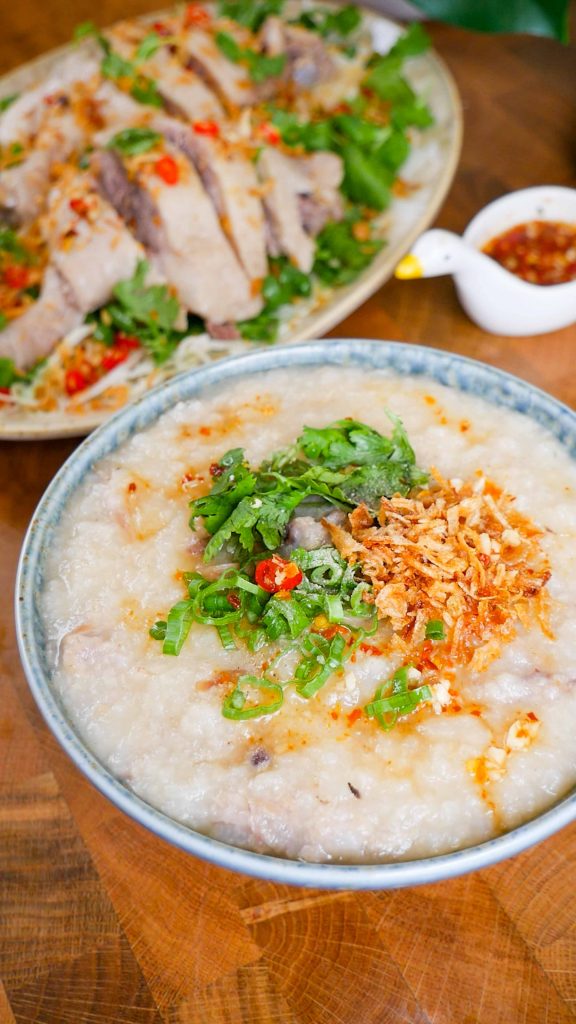
Why you’ll love this recipe
There are so many things to love about this duck congee recipe. It’s soul-soothing, nourishing, and simple to make! I’ve made this for my fiance, my friends, and my parents and they all rave about how delicious it is. My dad, who is a congee connoisseur, approves of this recipe and that’s how I know I’ve nailed it!
Now I’m a firm believer that a good congee always starts with a good broth and taking the extra time to make a flavorful broth is worth it! All you’ll really need to do is put everything into a pot to simmer, then set it and forget it. What you’re left with is a broth that’s not only delicious but also rich in collagen.
To amplify the flavor of the congee, I toasted the rice with minced garlic to add a nutty and more robust flavor. This extra step takes a few minutes to do and you can do this while the duck broth is doing its thing! This step is completely optional but highly recommended.
Duck is notorious for being gamey, and if this is something you’re concerned about, I got you. Rubbing the duck with ginger and soaking it in mirin will eliminate most of the gaminess. Ginger and mirin are also added to the simmering liquid, so it helps to tenderize and add flavor as well.
What I love most about congee is how easy it is for meal prep. You can make a big batch at the beginning of the week and have it as a quick and easy meal.
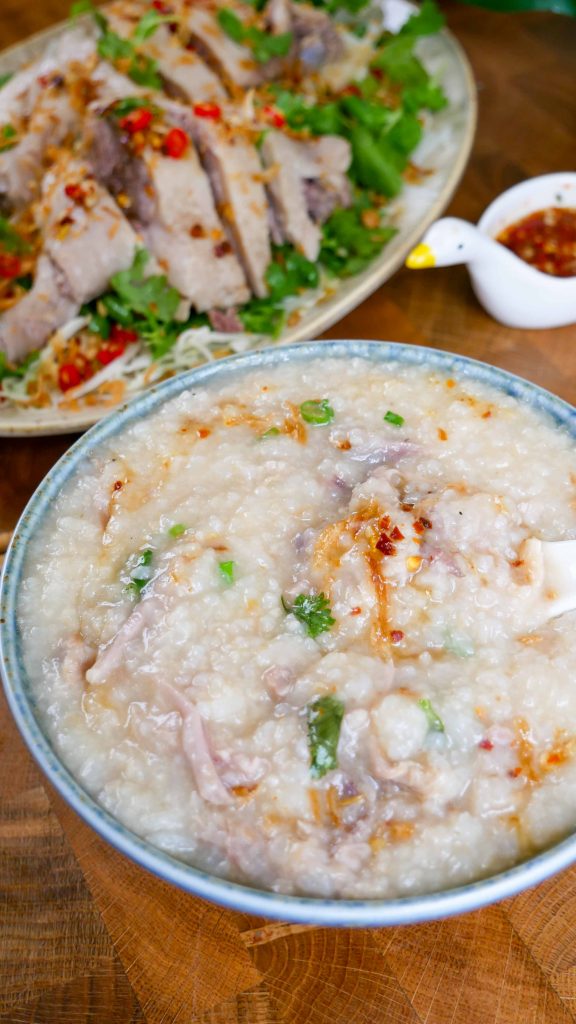
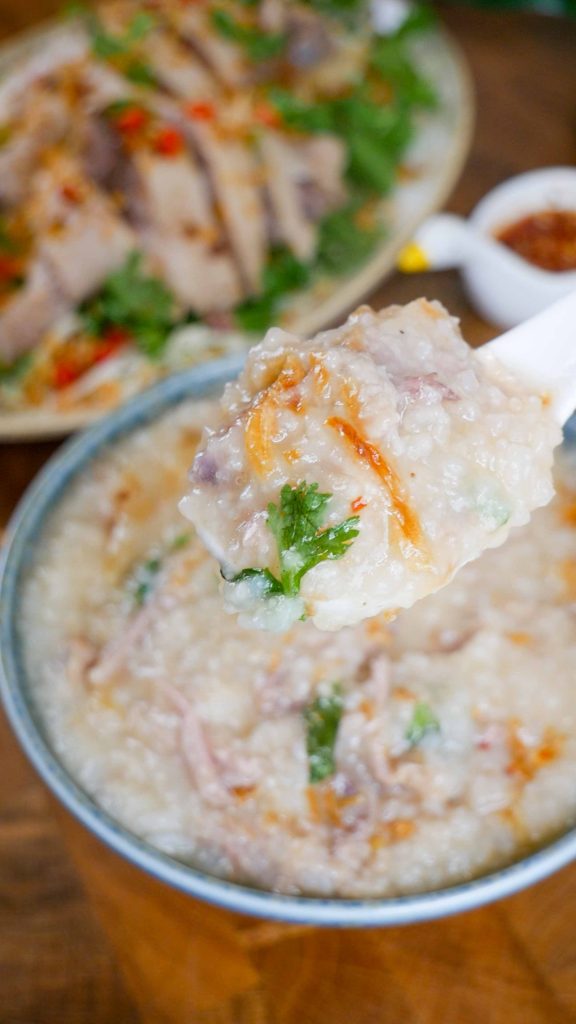
Duck Congee (Chao Vit) Ingredients & Substitutions
Duck wings: Duck wings don’t have a substantial amount of meat but I used them mainly to deepen the flavors and collagen for the broth. I also like to use duck feet or a combination of both. You can usually find duck in the meat section or frozen aisle at your local Asian market.
Duck legs: I used duck legs for this recipe and usually reserve it to make my Vietnamese duck salad however you can serve it with the congee as well. After cooking, either chop them up into smaller pieces and serve on the side with the congee or shred the meat from the bones and mix it with the congee then serve.
Mirin: Mirin is a type of cooking that helps to eliminate unpleasant odors and gaminess. The duck is soaked in mirin for 15 minutes and added to the broth, which also helps to tenderize the meat.
Water: For the broth
Charred onion: Charred onions have a richer, deeper, and more complex flavor compared to raw onions. If you’ve ever had pho, one of the key ingredients is charred aromatics and that was the same idea for this recipe. I charred the onion by placing it over the flame on the stovetop until the outer layer was mostly black. You can also do this by placing the onion under a broiler until charred
Ginger: Helps to remove the gamey taste and neutralize the smell
Salt: For seasoning
Uncooked Jasmine rice: You can use any type of rice for congee but I prefer using Jasmine rice because it has a subtle nutty and floral undertone. The rice is toasted with garlic to amplify its nuttiness and deepen its flavors before adding to the broth. Jasmine rice is a type of long-grain rice that is not as starchy as other rice varieties but still yields a delicious consistency
Garlic cloves: Adds a delicious aroma and depth of flavor. The garlic is toasted with the rice before adding to the broth
Neutral oil: Any neutral-tasting oil would work including avocado, corn, grapeseed, canola, and vegetable oil. I personally prefer to use avocado oil
Garnish Ingredients & Substitutions
Scallions: Adds a beautiful pop of color and freshness
Cilantro: For added freshness and a bright, peppery citrus zing
Fried shallots: Adds crunch and slight sweetness; can be substituted with fried garlic chips
White pepper: For a subtle hint of spice and pepperiness
Nuoc Mam Dipping Sauce Ingredients & Substitutions
Sichuan chili flakes: For spice, this can be substituted with red chili flakes
Sugar: To balance the spicy, savory, and sour notes. This sauce is typically on the sweeter side but feel free to adjust to taste
Thai chili peppers: Also for spice and freshness
Garlic cloves: Fresh garlic is a must for the sauce! Feel free to add more but not less
Fish sauce: Adds a delicious umami taste that ties everything in. I highly recommend the Three Crabs Brand.
Lime juice: For a bright citrusy flavor. This can be substituted with rice vinegar.
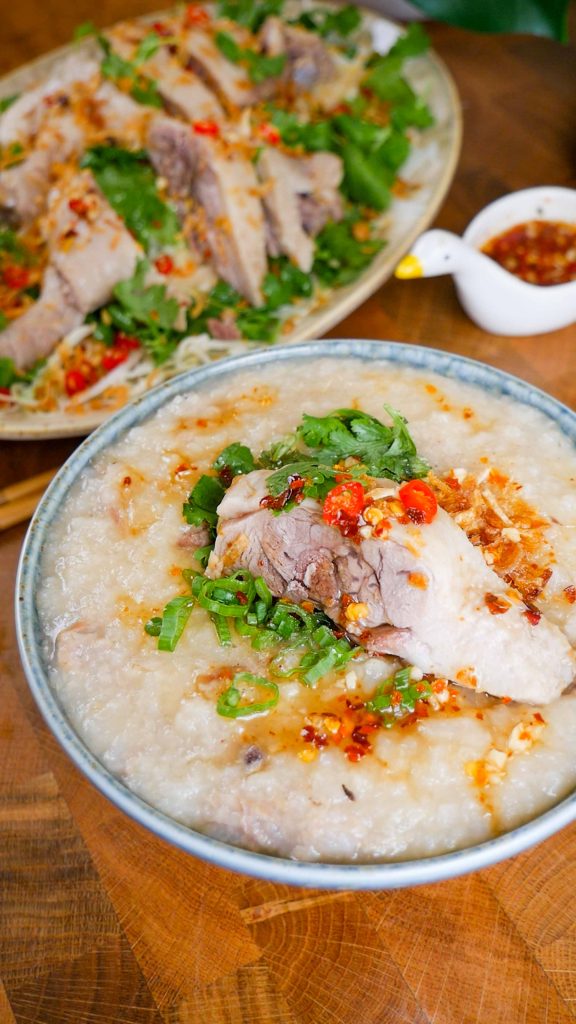
How to Prepare Duck Congee (Chao Vit)
Step 1: Marinate the duck
Start by rubbing the duck legs and wings with 1 slice of ginger. Next, pour 3 tablespoons of mirin over the duck and rub it in. Let this stand for 15 minutes. Doing so will remove any underlying odors and gaminess.
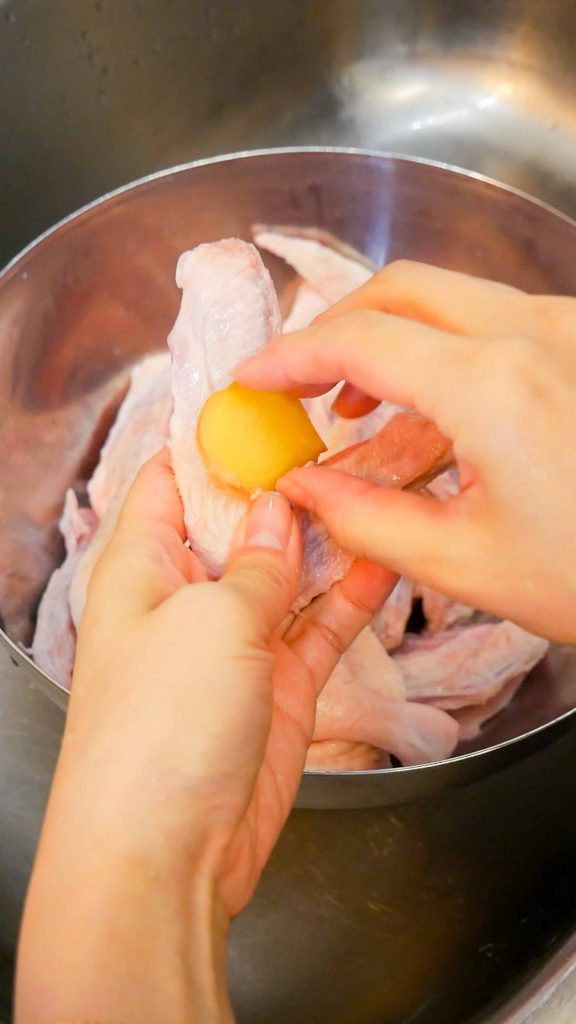
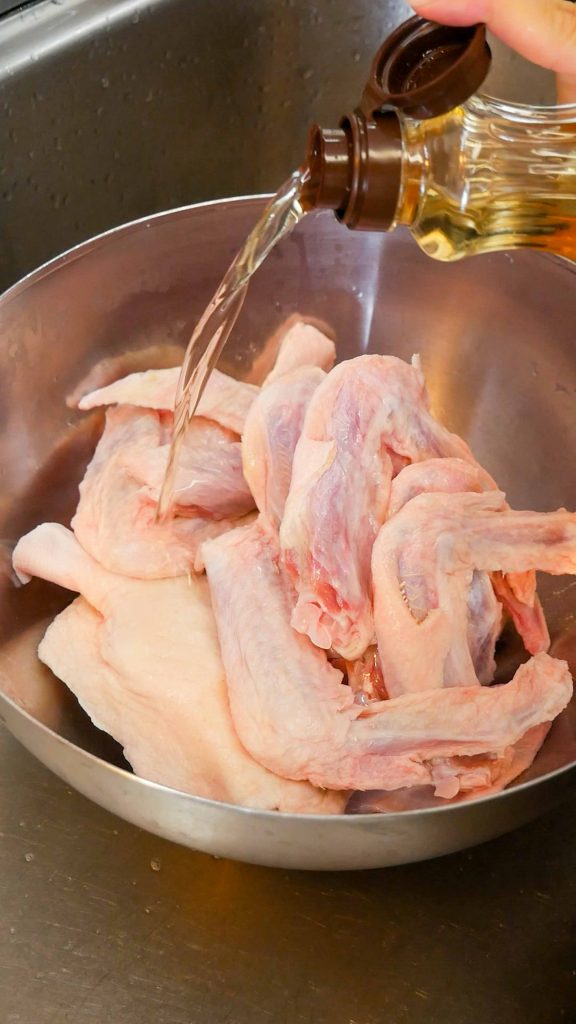

Step 2: Char the onion
In the meantime, char the onion on the stovetop until most of it is blackened. You can also broil the onion.
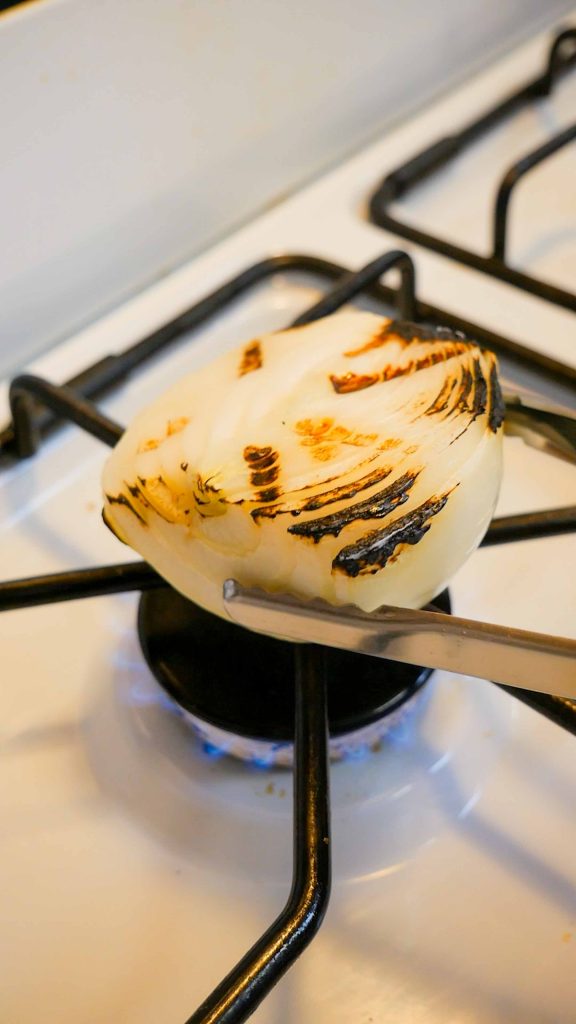

Step 3: Boil the duck
To a large pot with boiling water, add the duck legs, duck wings, grilled onion, remaining slices of ginger, 2 tablespoons mirin, and 1 teaspoon of salt.
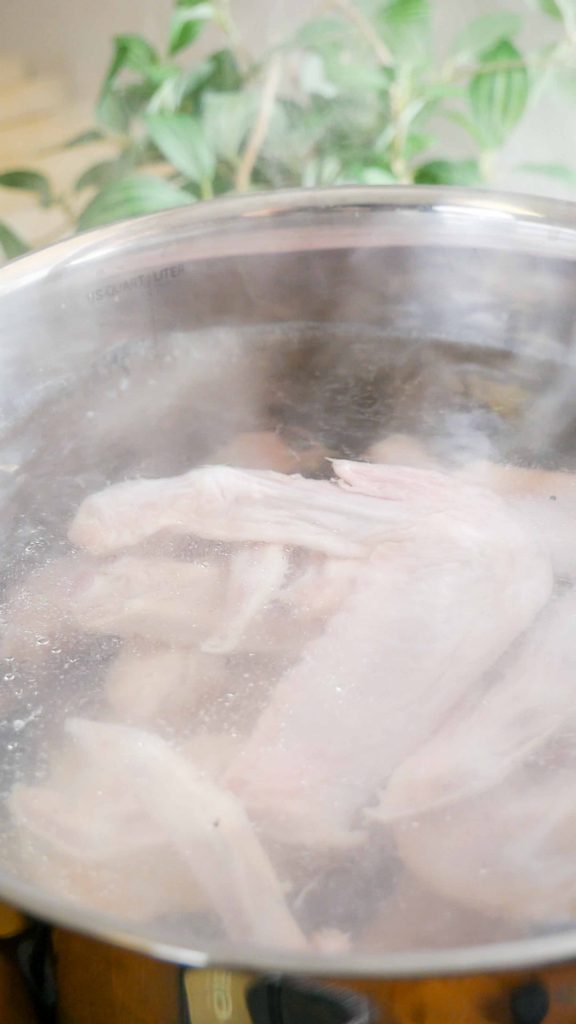
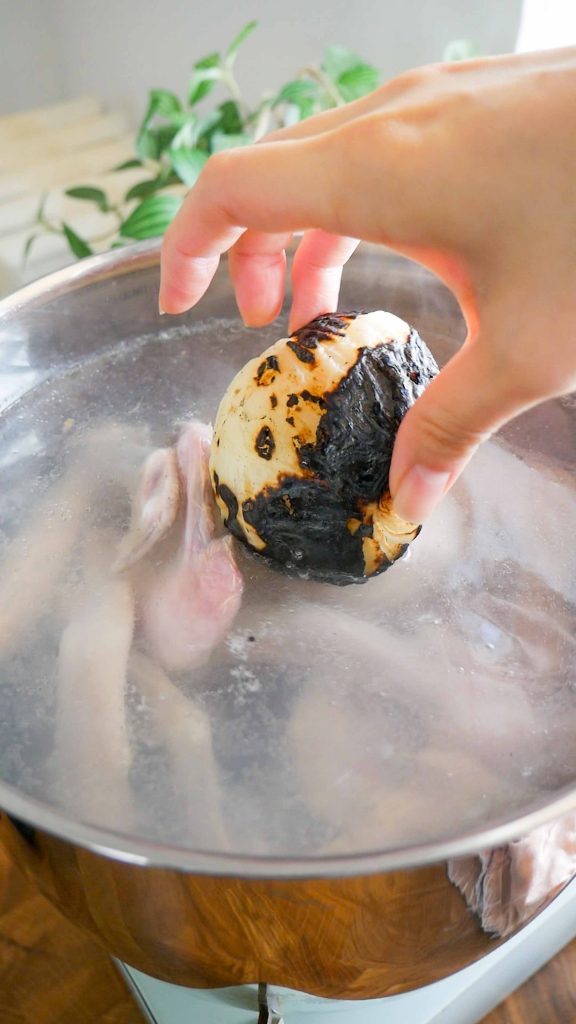
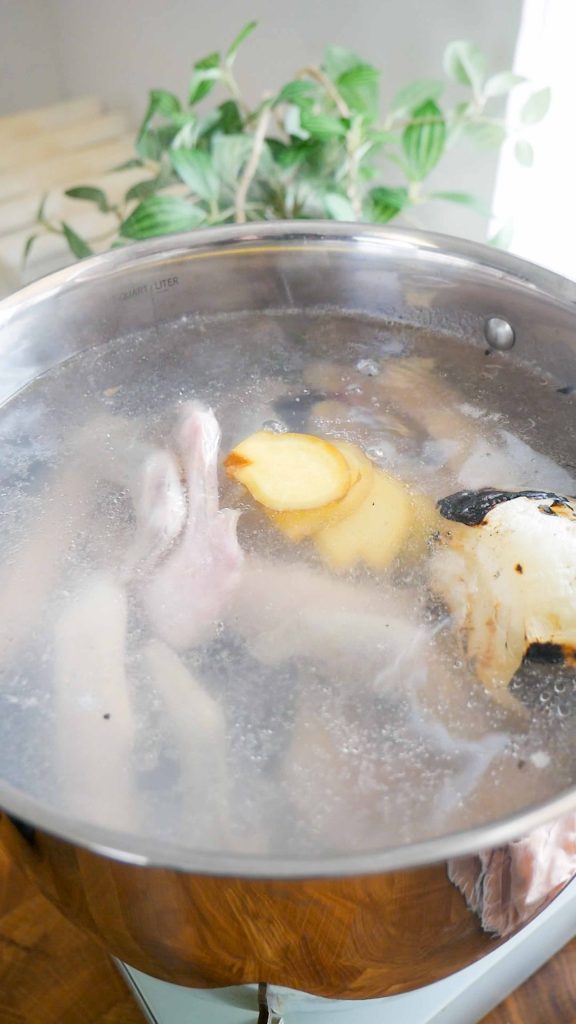
Step 4: Skim off the scum
Bring to a boil then skim off the scum on the top. Cover and simmer on medium-low for 45 minutes.
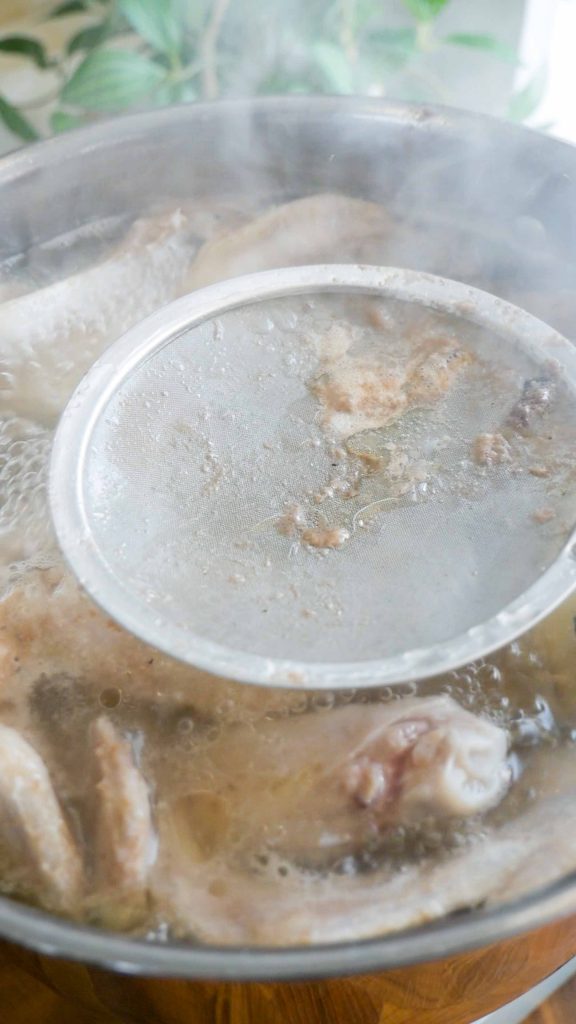
Step 5: Wash the rice
While the duck is cooking, wash the rice until the water runs clear. Next, drain well and set aside.
Step 6: Saute the garlic
In a pan, heat neutral oil over medium-low heat. Add minced garlic and saute for 30 seconds to 1 minute, making sure not to brown them.
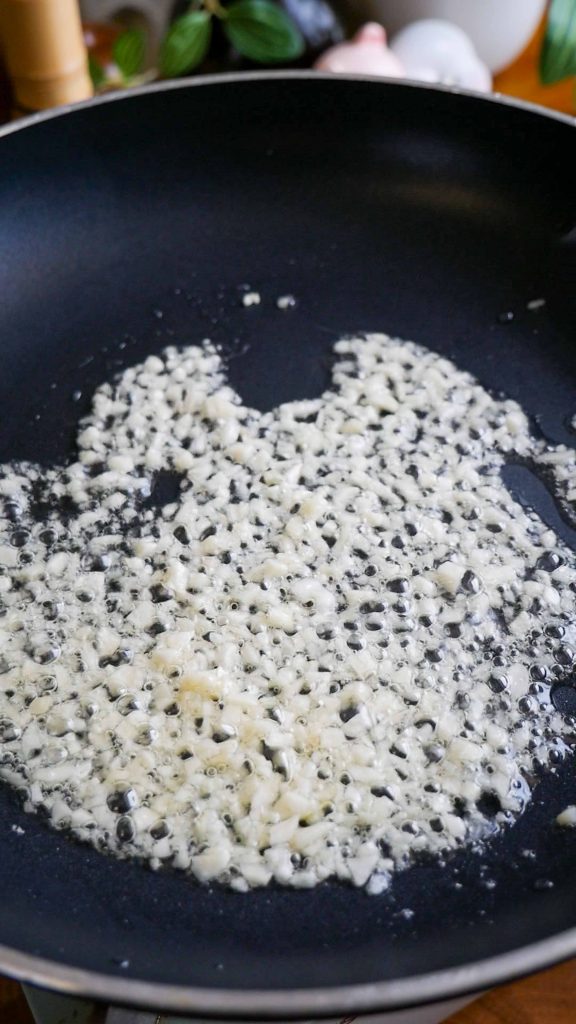
Step 7: Add the rice and toast
Toss in the drained rice and toast until golden, for about 10 minutes. Remove from heat and set aside for later.
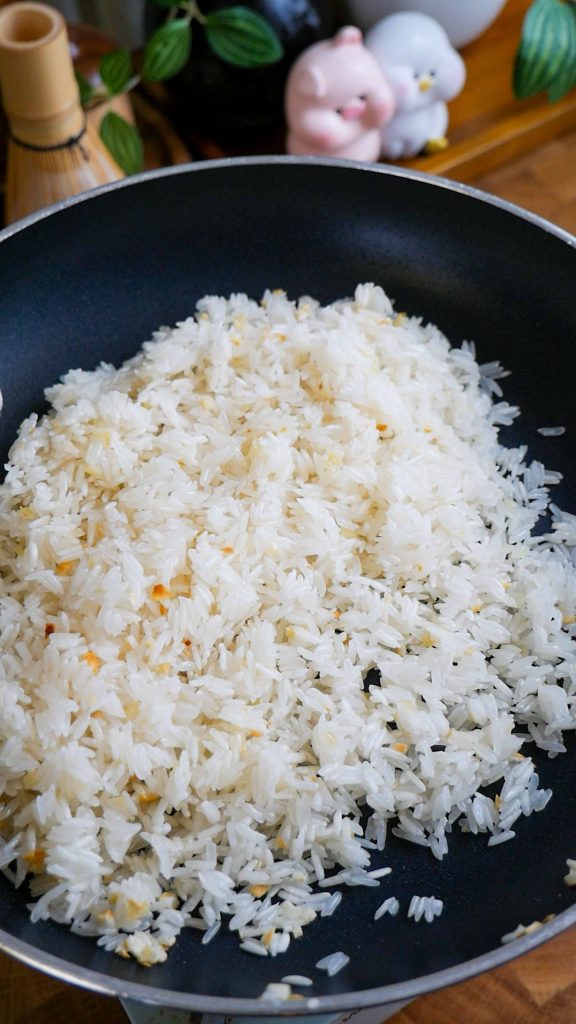
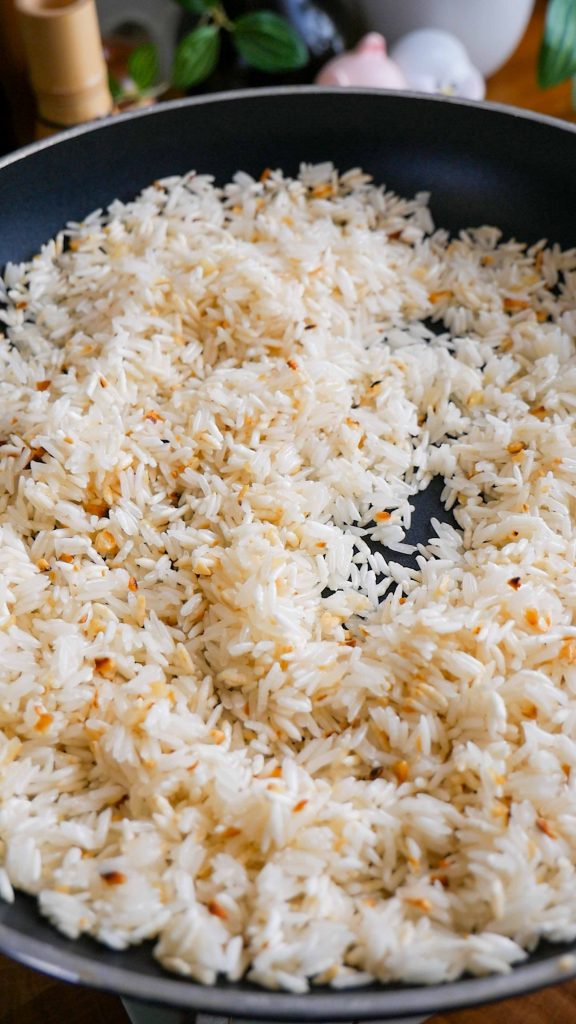
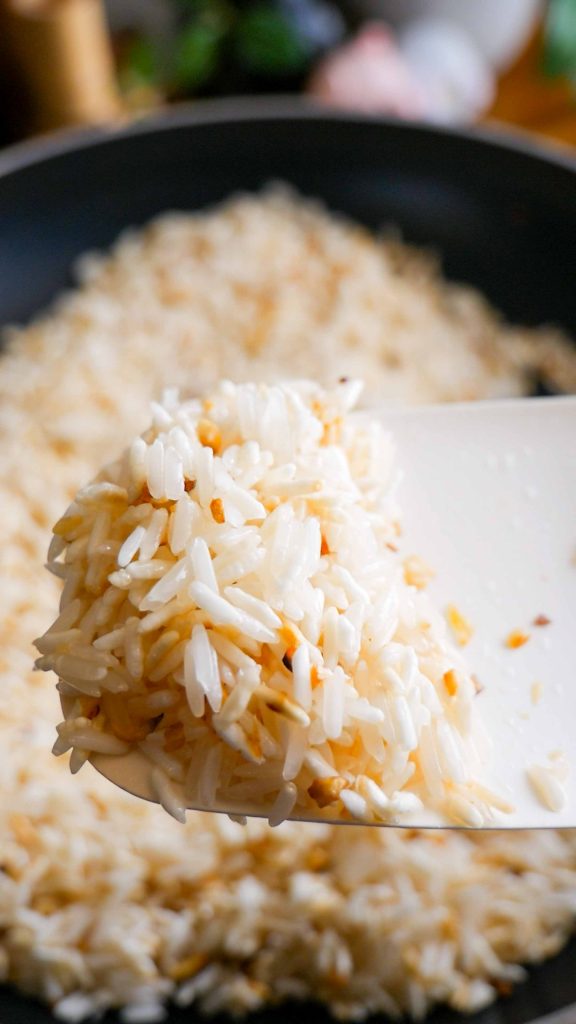
Step 8: Let the duck cool
After 45 minutes, remove the duck wings and legs and set aside to cool. If you’re making my Vietnamese duck salad to serve with this congee, transfer the duck legs into an ice bath after removing them. Otherwise, you can place them with the duck wings.

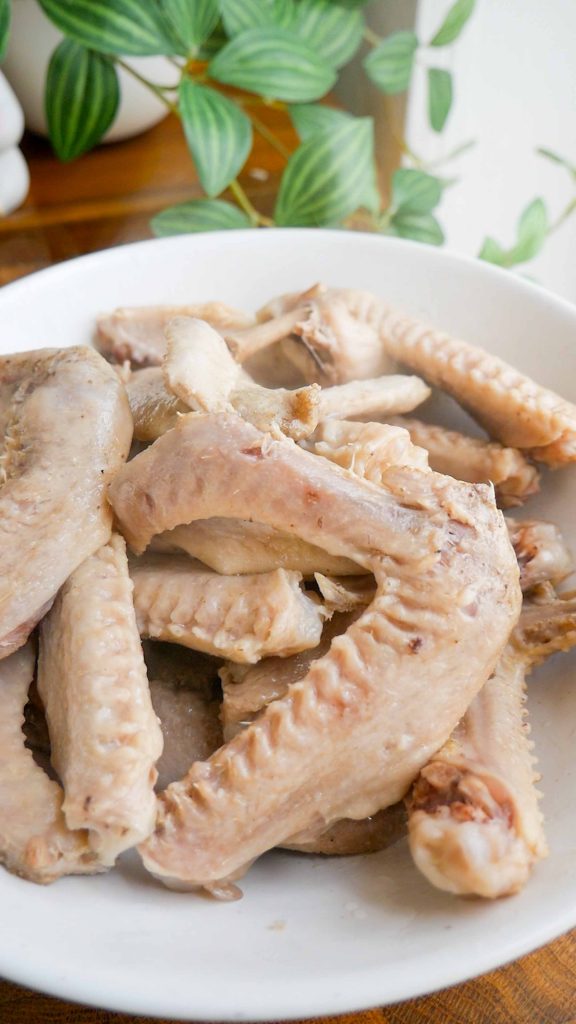
Step 9: Add the rice to the broth
Scoop out the aromatics then add the toasted garlic rice into the broth.
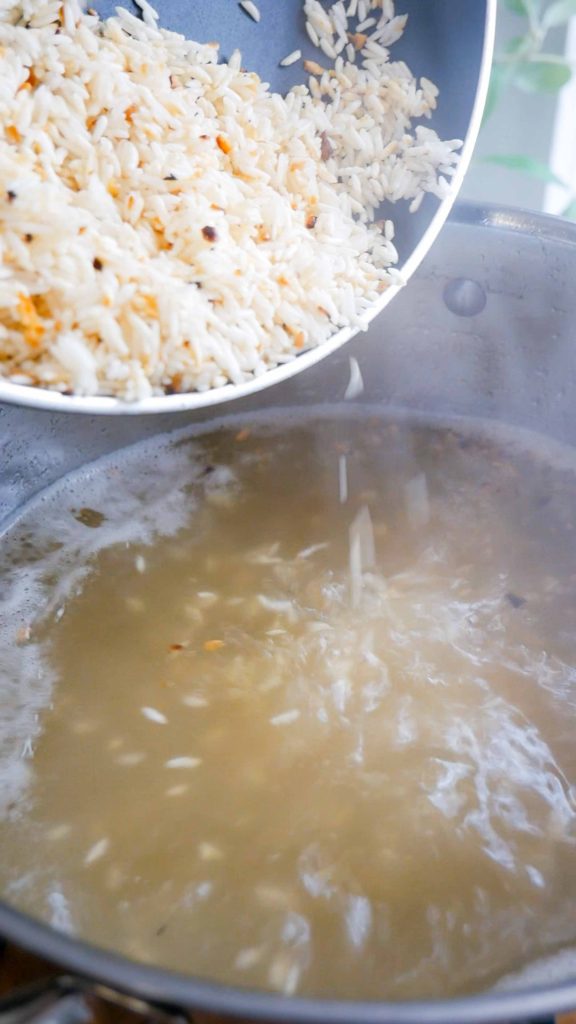
Step 10: Simmer the rice
Cover and simmer over low heat until the rice is soft and tender. This should take about 45 minutes. Stir the pot occasionally to prevent the rice from sticking to the bottom.
Step 11: Shred the duck meat
While the rice is cooking. Tear the meat off the duck wings and legs. Instead of shredding the meat off the duck lugs, you can also chop them into bite-sized pieces and serve on the side with the congee.
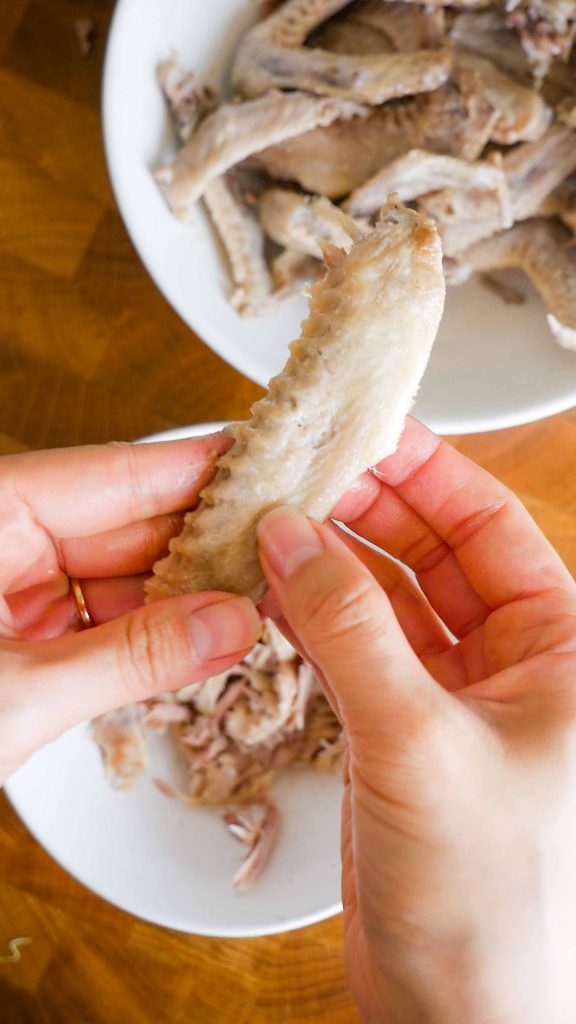
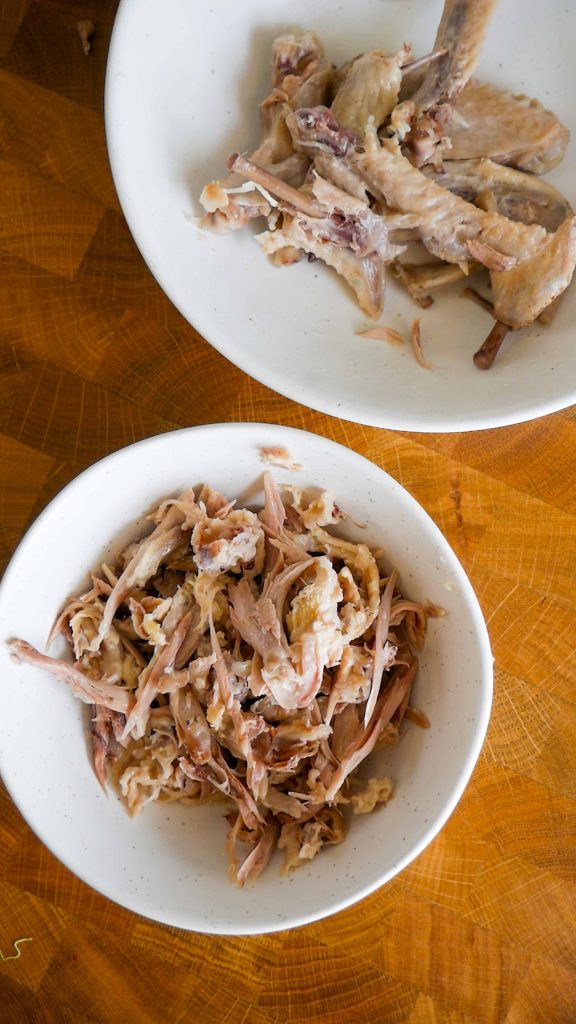
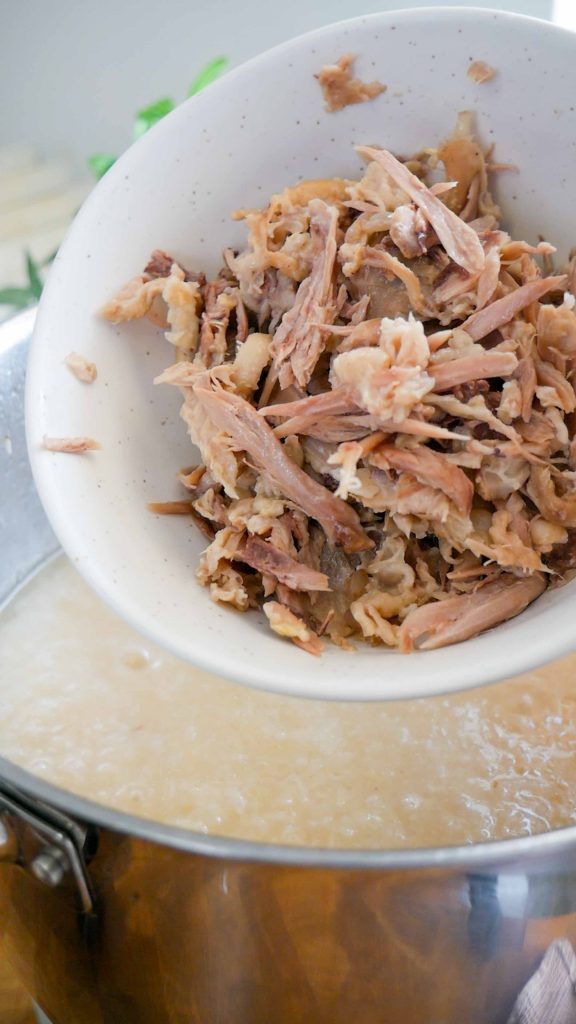
Step 12: Add the duck meat
When the congee has thickened up to your desired consistency, add the duck meat to the pot and season with salt to taste.
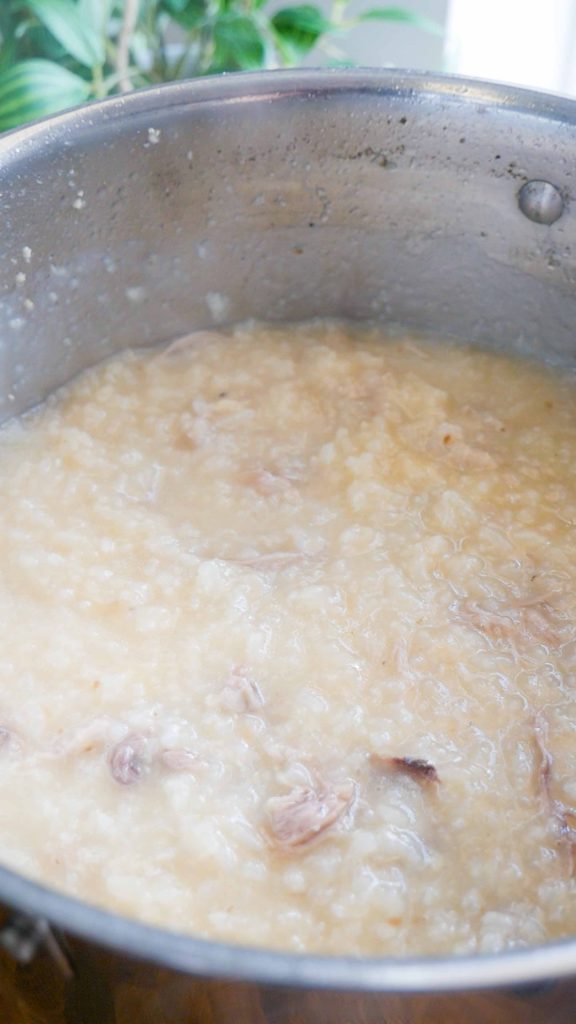
Step 13: Plate and serve
To serve, garnish with scallions, cilantro, fried shallots, and white pepper.
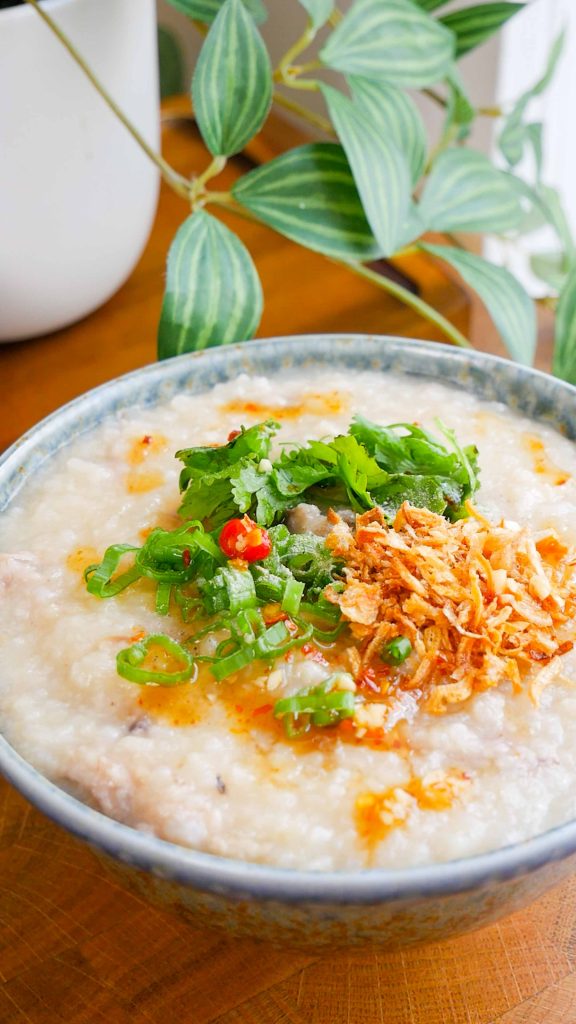
Nuoc Mam Dipping Sauce
For an extra flavor boost, you can prepare this dipping sauce and either dip the duck or drizzle it over the congee.
Step 1: Combine sauce ingredients
In a small bowl, combine chili flakes, sugar, chopped Thai chili peppers, minced garlic, fish sauce, and lime juice. Mix well then serve.
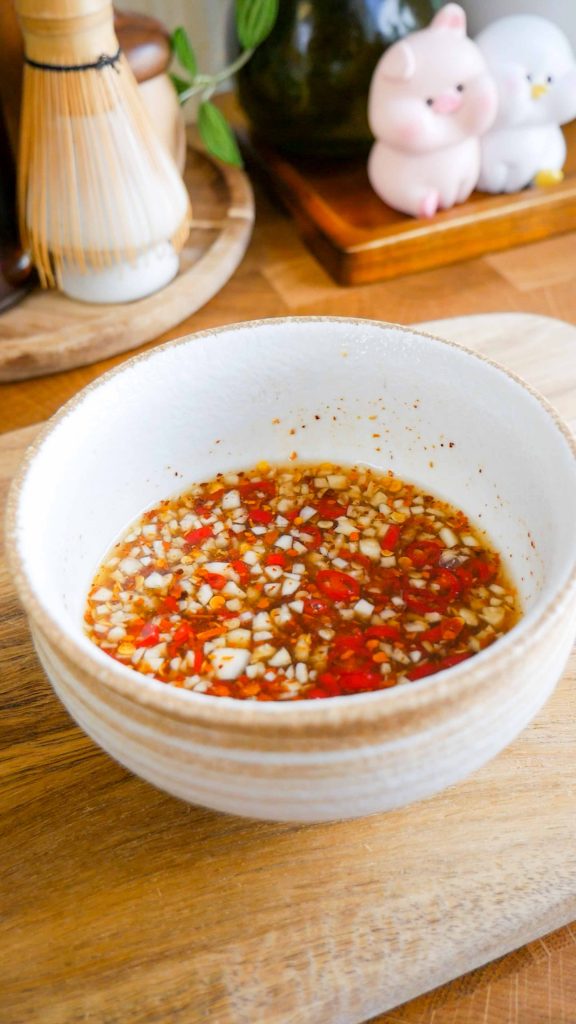
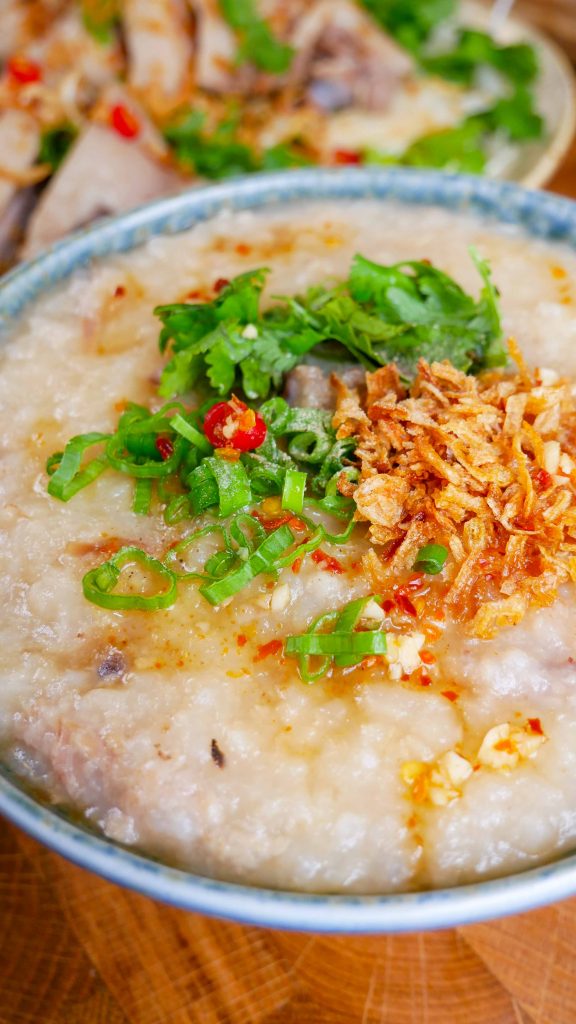
Preparation Tips for Duck Congee (Chao Vit)
Here are some helpful tips for making the most delicious duck congee every time:
- Duck isn’t usually found at your typical supermarket chains however you can most likely find them at your local Asian market in the meat section or frozen aisle, which is where I get mine. If you have a meat shop, ask the butcher if they have duck.
- If you’ve got the extra time, you can sear or roast the duck wings until browned for a deeper more intense flavor. To do this, rub the duck wings in a bit of oil then pan-sear both sides for 2 to 3 minutes or roast in the oven at 400F for about 15 minutes. I don’t recommend doing this for the duck legs as it may dry out the meat.
- Be sure to keep an eye on the rice when toasting it. The garlic can easily burn and turn bitter, so make sure to toss it around and scrape the bottom of the pan to avoid burning.
- If you want a looser congee, you can cook it for a shorter time or add more liquid as needed. However, if you want a thicker congee, cook it down for longer until it reaches your desired consistency.
- This congee is collagen-rich which causes it to thicken up quite a bit after it cools. To reheat, you can add a splash of water to loosen it up.
- More toppings, more flavor, and more fun! I added cilantro, scallions, fried shallots, and white pepper but you can get creative with the toppings. For instance, you can add chili oil, soy sauce, and even serve a fried cruller on the side.

Frequently Asked Questions
What is congee made of?
Congee is a dish made by simmering rice in a large amount of liquid, usually broth or water with aromatics until the rice becomes soft. This process also releases the natural starch of the rice, making the consistency thick and creamy. It is usually topped with a type of protein like chicken, fish, beef, or even Preserved duck eggs.
What’s the difference between porridge and congee?
Porridge and congee are similar in that both are made with grains cooked with large amounts of liquid. However, congee is always made with rice, while porridge is usually made with oats, barley, or rye. Congee is savory, while porridge can sometimes be served sweet with sugar, milk, and cinnamon. Congee has a more smooth, thick, and liquidy texture, while porridge is usually thick with the grains still intact.
Why do Asians eat congee when sick?
Growing up, my mom would always make me congee when I was sick. And it’s commonly eaten when you’re sick because it is so comforting! Its warmth can soothe a sore throat and an upset stomach. It is light on the tummy as it is mostly liquid, yet it provides energy and hydration to the body. Lastly, it is easy to digest.
Why do Chinese people eat congee?
Aside from being affordable and easy to make, traditional Chinese medicine considers congee as the comfort food for the digestive system. It is light, warm, and easy to digest making it perfect for people who are sick or those who have sensitive tummies. Aside from being a comfort food for the stomach, congee is also a staple dish served usually for breakfast but is also suitable any time of the day.
Is congee just overcooked rice?
Yes, technically, congee is overcooked rice because you want the rice to break down and release its natural starch to achieve a creamy consistency. Do note the difference that congee has a different water-to-rice ratio than steamed rice.
How long is the shelf life of the congee?
When stored properly in an airtight container, congee should stay good in the refrigerator for up to 5 days. You can also freeze it by dividing and storing it in portion containers. Freeze for up to a month and reheat in the microwave or stovetop until steaming hot before consuming. Signs that the congee has spoiled are off odors and discoloration. If it has a sour smell, slimy texture, or discolorations, it means it has gone bad and should be thrown out to avoid getting sick.
Can I use leftover duck meat?
Yes, absolutely! You can use roast duck, fried duck, Peking duck, or any leftover duck from last night’s dinner. Just keep in mind that the flavor of the congee will be vastly different as it would be made up of the flavors of the duck.
How to reheat duck congee?
You can heat up the congee using a pot on the stovetop or using the microwave. If frozen, thaw it overnight in the fridge. To heat it on the stovetop, add a splash of water to loosen the congee then place it over medium heat. Simmer for 5 minutes or until the congee is warmed through. To heat the congee in the microwave, cover with plastic wrap and microwave on high for 2 minutes or until completely heated through. If it gets too thick, simply add a little water and mix until it returns to the congee consistency.

Looking for more easy and delicious rice recipes?
Chinese Garlic Fried Rice — This Chinese style fried rice recipe is made for garlic lovers! The fried rice is not only exploding with flavors of garlic but it’s seasoned with chicken bouillon and Shaoxing wine for the signature restaurant quality taste. Ready in 20 minutes, this is the perfect quick upgrade to your leftover rice.
Chicken Kimbap — Kimbap is a classic Korean dish made with rice, vegetables, and protein in gim or roasted seaweed. This recipe gives it a familiar Western twist with the addition of chicken fries.
Crab Onigiri — This spicy creamy crab onigiri is small in size but packed with big flavors. The filling requires only 5 ingredients, plus salt and pepper! It’s light, bright, zesty, creamy, spicy – I mean I could probably go on and on!
Beef Dolsot Bibimbap — Beef dolsot bibimbap is a Korean rice dish made with a variety of vegetables, beef, gochujang, and egg on top of white rice traditionally served in a dolsot or hot stone bowl. It’s a balanced filling meal that’s both delicious and nourishing! My choice of protein is marinated raw beef, but you can give it a quick stir fry if you prefer.
Spam Rice Balls — These delicious Spam rice balls are made with musubi-inspired Spam, eggs, and rice for a quick and easy meal. They are small flavor bombs that will satisfy your appetite and fill your tummy!
Cup Ramen Noodles Fried Rice — If you love instant ramen and fried rice, this recipe is for you! It’s a combination of my favorite meals made of crispy toasted instant noodles and fluffy fried rice served with scallions, eggs, corn, and shallots. It’s the ultimate comfort food and it is very easy to make!
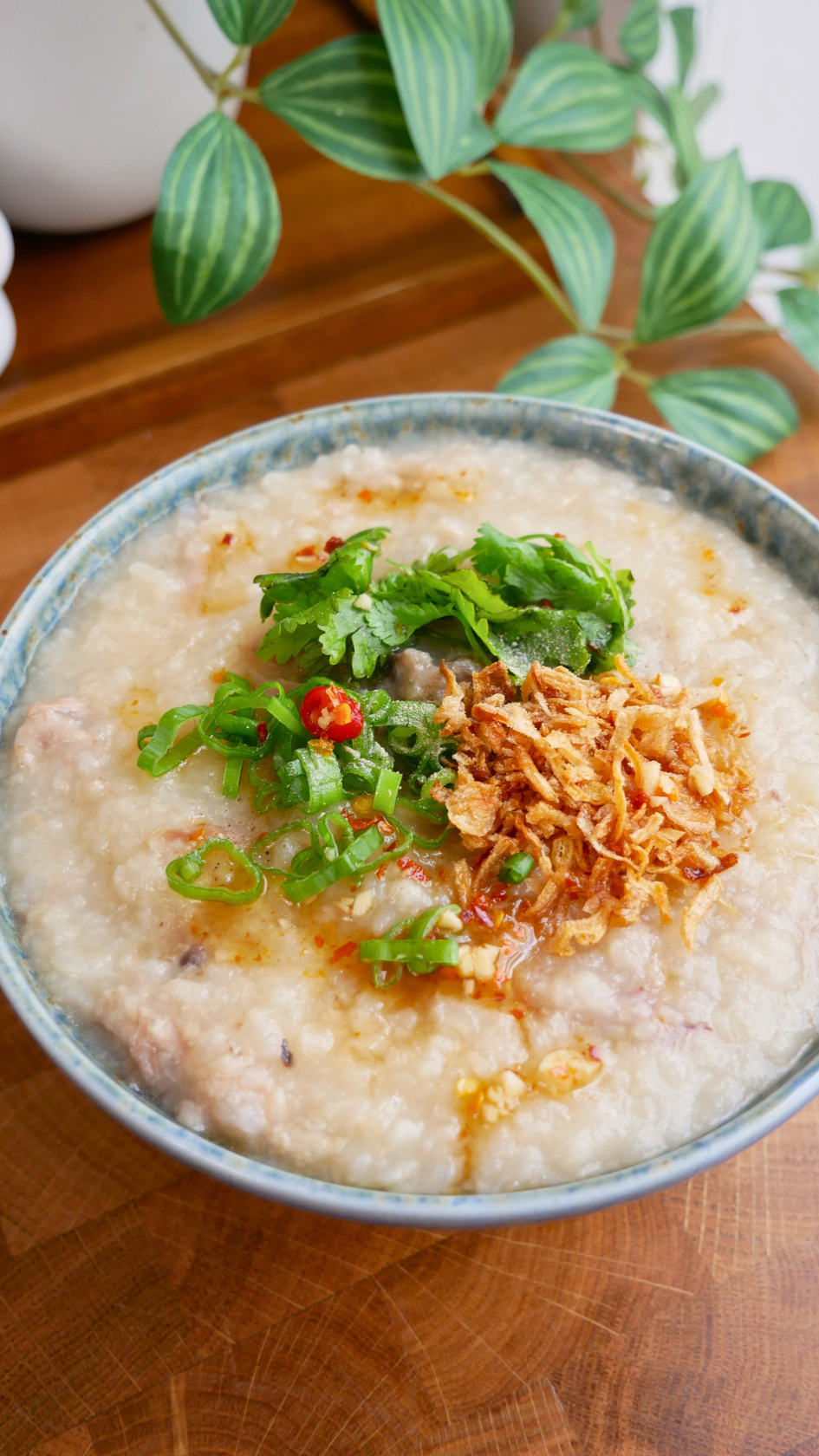
Duck Congee (Chao Vit) Recipe
Ingredients
- 1 lb duck wings about 8-10 wings
- 1 lb duck legs about 2 legs
- 5 tbsp mirin or cooking wine divided
- 12 cups water
- 1/2 charred onion
- 5 slices ginger divided
- 2 tsp salt divided
- 1 cup uncooked Jasmine rice
- 4 garlic cloves minced
- 2 tbsp neutral oil
Garnish
- scallions
- cilantro
- fried shallots
- white pepper
Duck Dipping Sauce
- 1 tsp chili flakes
- 3 tsp sugar adjust to taste
- 4 Thai chili peppers chopped
- 2 garlic cloves minced
- 2 tbsp fish sauce adjust to taste
- 2 tbsp lime juice adjust to taste
Instructions
- Start by rubbing the duck legs and wings with 1 slice of ginger. Next, pour 3 tablespoons of mirin over the duck and rub it in. Let this stand for 15 minutes. Doing so will remove any underlying odors.
- In the meantime, char the onion on the stovetop until most of it is blackened. You can also broil the onion.
- To a large pot with boiling water, add the duck legs, duck wings, grilled onion, remaining slices of ginger, 2 tablespoons mirin, and 1 teaspoon of salt.
- Bring to a boil then skim off the scum on the top. Cover and simmer on medium-low for 45 minutes.
- While the duck is cooking, wash the rice until the water runs clear. Next, drain well and set aside.
- In a pan, heat neutral oil over medium-low heat. Add minced garlic and saute for 30 seconds to 1 minute, making sure not to brown them.
- Toss in the drained rice and toast for about 10 minutes or until golden. Remove from heat and set aside for later.
- After 45 minutes, remove the duck wings and legs and set aside to cool. If you’re making my Vietnamese duck salad to serve with this congee, transfer the duck legs into an ice bath after removing them. Otherwise, you can place them with the duck wings.
- Scoop out the aromatics then add the toasted garlic rice into the broth.
- Cover and simmer over low heat until the rice is soft and tender. This should take about 45 minutes. Stir the pot occasionally to prevent the rice from sticking to the bottom.
- While the rice is cooking. Tear the meat off the duck wings and legs. Instead of shredding the meat off the duck lugs, you can also chop them into bite-sized pieces and serve on the side with the congee.
- When the congee has thickened up, add the duck meat to the pot and season with salt to taste.
- To serve, garnish with scallions, cilantro, fried shallots, and white pepper.
Nuoc Mam Dipping Sauce
- For an extra flavor boost, you can prepare this duck dipping sauce and either dip the duck or drizzle it over the congee.
- In a small bowl, combine chili flakes, sugar, chopped Thai chili peppers, minced garlic, fish sauce, and lime juice. Mix well then serve.
